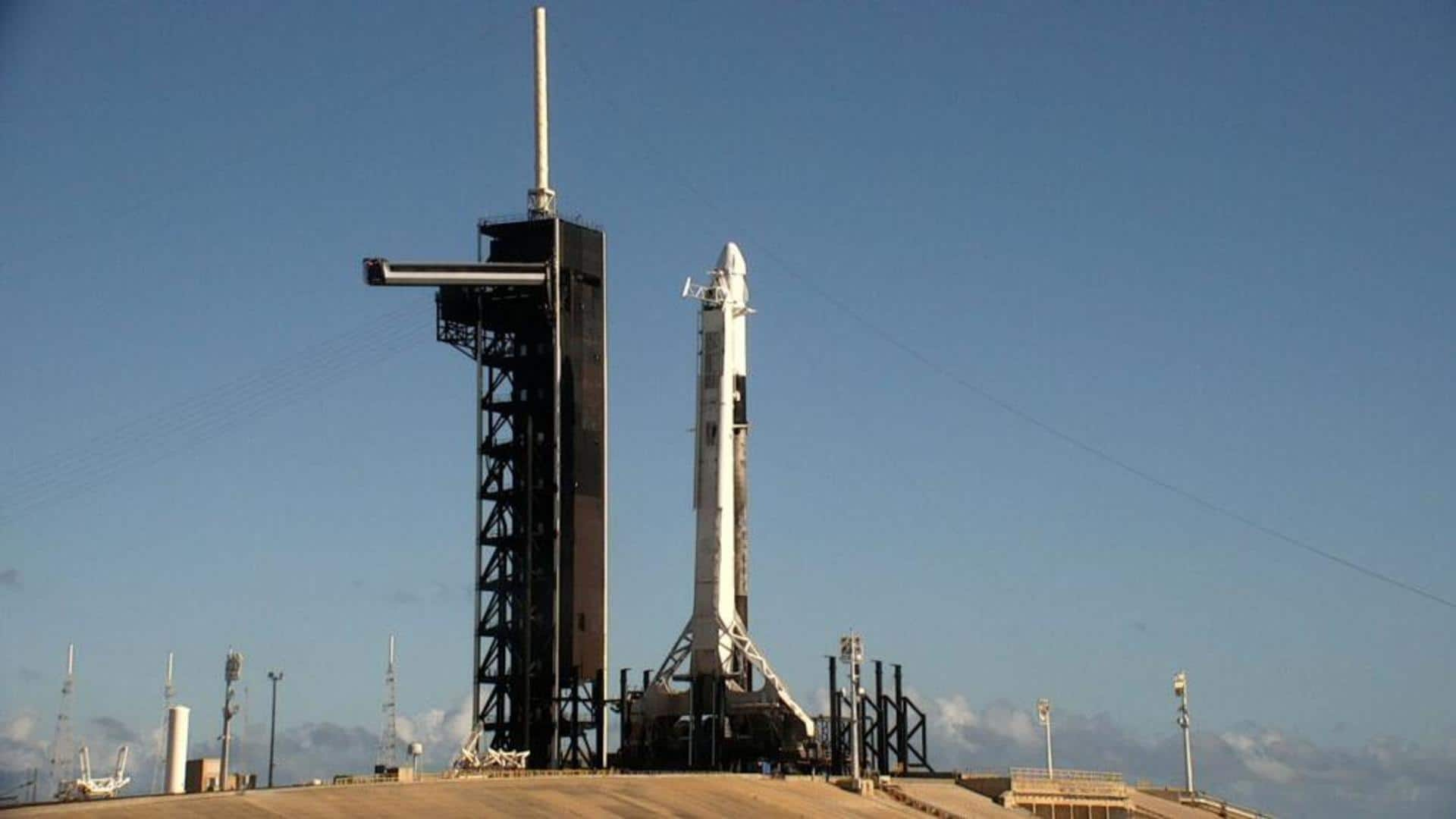
NASA and SpaceX to launch CRS-28 mission to ISS today
What's the story
SpaceX will launch the 28th Commercial Resupply Services (CRS-28) mission to the International Space Station (ISS) for NASA today. A Dragon capsule carrying the cargo will take off aboard a SpaceX Falcon 9 rocket from Kennedy Space Center, Florida at 9:17 pm. Originally the mission was scheduled to launch on June 3 but has been postponed twice now due to unfavorable weather conditions.
Context
Why does this story matter?
After the termination of its Space Shuttle Program, NASA signed up two commercial launch partners for the delivery of cargo and supplies, or the CRS missions, to the ISS. The two companies, SpaceX and Northrop Grumman, have been resupplying the orbiting space station with cargo supplies. The CRS-28 mission marks the 28th overall cargo resupply mission for SpaceX.
Launch
The Dragon spacecraft will autonomously dock with the ISS
Following stage separation, Falcon 9's first stage will land in the Atlantic Ocean on SpaceX's drone ship called "A Shortfall of Gravitas." Meanwhile, the Dragon spacecraft will autonomously dock with the ISS after approximately an 18-hour flight. The CRS-28 mission marks the fourth flight for the Dragon spacecraft, which has previously flown three missions, namely CRS-21, CRS-23, and CRS-25 to the ISS.
Information
The Dragon capsule will spend a month at the ISS
The Dragon spacecraft is planned to spend roughly a month at the ISS. It will then be brought back to Earth with research and return items, making a splash down off the coast of Florida, per NASA.
Mission supplies
The Dragon spacecraft will carry more than 3,175kg payload
The Dragon spacecraft will carry more than 3,175kg of payload comprising science experiments, crew supplies, hardware, and food for the crew aboard the ISS. Along with replenishing the supplies for the ongoing projects aboard the ISS, the CRS-28 mission will also take new scientific investigations to the ISS. This list includes technology demonstrations and studies on plant responses to stresses during spaceflight.
Solar panels
The mission also includes a pair of solar arrays
The CRS-28 mission supplies also include a pair of iROSAs (International Space Station Roll Out Solar Arrays), which will augment the space station's power supply. The new solar arrays will be installed on the ISS by NASA astronauts through two spacewalks. Once functional, the whole suite of iROSAs will boost the space station's power supply by 20% to 30%.
Research
The ESA intends to study thunderstorms from the ISS
The CRS-28 mission will also include an investigation from the ESA (European Space Agency) to survey thunderstorms. The ISS, which is located roughly 400km above Earth, would allow researchers to monitor the electrical activity from space, and particularly track the "inception, frequency, and altitude" of "blue discharges." Understanding the lightning and electrical activity in Earth's atmosphere will ultimately help improve atmospheric models.
Plant-based studies
There will also be studies carried out on telomeres
There will also be studies carried out on telomeres, which are genetic structures present in our chromosomes that shorten with age. However, research has shown that telomeres lengthen in space. The ISS crew will test a technique to measure telomere length under microgravity conditions in space. Understanding the mechanism behind telomere lengthening could reveal possible effects on astronaut health during long-term missions, per NASA.
Information
SpaceX has a backup launch date on June 7
SpaceX has stated that the conditions today are "60% favorable for liftoff." However, if the CRS-28 mission does not take off today, the company has a backup launch date on June 7.